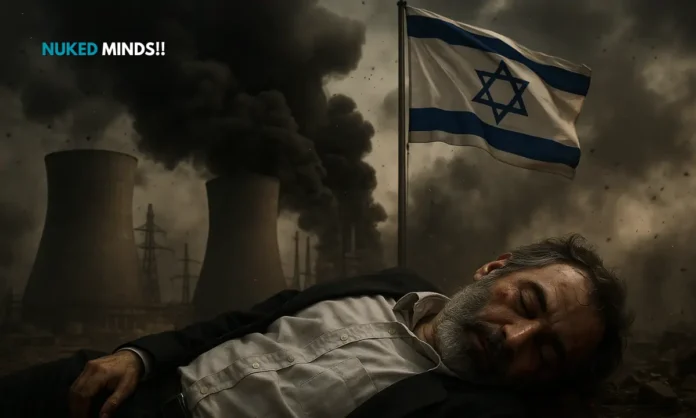Summary
- Israel admitted to killing at least 14 top Iranian nuclear scientists, including chemists, physicists, and engineers, in a strategic decapitation strike.
- The Israeli government claims the assassinations cripple Iran’s nuclear weaponisation efforts, though experts argue the program may eventually recover.
- Iran vows to accelerate its nuclear ambitions, as European nations push for a diplomatic resolution amid fears of a longer, deadlier conflict.
The Kill Chain Doctrine Comes to Iran’s Nuclear Core
The June 2025 targeted assassinations of 14 elite Iranian nuclear scientists by Israel mark the most direct and sweeping strike on the intellectual foundation of Tehran’s atomic program in over a decade. While covert operations and individual assassinations have long defined the shadow war between Tel Aviv and Tehran, this campaign—publicly confirmed by Israeli Ambassador to France Joshua Zarka—was unprecedented in scale and intent. The killings are not just strategic but symbolic, aimed at shattering Iran’s capability to rapidly weaponise its nuclear infrastructure.
As Ambassador Zarka plainly stated, these men were not just physicists—“they were personally involved in the creation, fabrication, and production of a nuclear weapon.” Israel’s framing of the scientists as combatants rather than researchers reveals a chilling calculus: that brainpower is as much a threat as uranium enrichment. Nine of the 14 were reportedly eliminated in the opening Israeli strike on June 13. By June 24, another death—Mohammad Reza Sedighi Saber—was reported after surviving an earlier attack that had already killed his teenage son.
While Zarka insisted these were not attacks on academic knowledge but on the operational vanguard of a weapons program, the implications are profound. Has Israel rewritten the rules of deterrence by openly weaponizing targeted intellectual decapitation? Or has it simply delayed the inevitable?
Make no mistake the IAEA chief and watchdog of nuclear weapons has given the names of Iranian scientists to Israel in order for them to be assasinated,
— 🔻Siyaa🔻 (@SiyaaUnrated) June 21, 2025
10 Iranian scientists have been killed including their wives and children, entire neighbor blocks with them.
Zio Rafael Grossi pic.twitter.com/b1VB2fHgXC
What Was Destroyed—and What Survives?
- Israeli forces killed 14 scientists, allegedly including experts in explosives, centrifuge design, and nuclear core fabrication.
- U.S. stealth bombers had already bombed Natanz, Isfahan, and Fordo nuclear facilities days earlier, damaging infrastructure.
- Intelligence analysts say the human losses may be more consequential than physical damage to enrichment sites.
- Iran confirmed loss of senior physicists and vowed to continue its “peaceful” nuclear pursuits.
While Israeli airstrikes and U.S. bunker-busting bombs hammered aboveground facilities, it is the surgical elimination of minds, not machines, that may prove more disruptive to Iran’s nuclear timeline. Intelligence leaks suggest that the dead included materials scientists, metallurgists, and engineers capable of miniaturising warheads and adapting them for missile delivery—a far rarer skill set than basic uranium enrichment.
And yet, nuclear expertise is not finite. Analysts argue that Iran retains the academic base and institutional knowledge to replace the slain. The program may slow, but not stop. “You can destroy facilities and delay blueprints, but you can’t erase a nation’s scientific memory,” said one former IAEA inspector.
Iranian state television announced a symbolic funeral for Saber, reinforcing the narrative of martyrdom. The loss of his son is being exploited to rally domestic support, as the regime characterises the strikes not as counterproliferation, but as “acts of terror against science.” Iranian officials maintain that their nuclear ambitions remain peaceful, yet the targeting of core personnel makes the political line harder to defend.
Diplomacy’s Delicate Clock Is Ticking
- UK, France, and Germany argue military force won’t erase Iran’s nuclear know-how.
- Iran’s parliament has voted to suspend cooperation with the IAEA following the attacks.
- Experts worry that killing scientists may push Iran to accelerate weapon development.
- Trump’s role in brokering the Iran–Israel ceasefire may falter under these escalations.
The broader geopolitical concern is not just what Israel destroyed—but what its actions might ignite. The European bloc, still haunted by the JCPOA collapse, argues that “strikes cannot destroy the knowledge Iran has acquired over decades,” as UK Foreign Secretary David Lammy told Parliament. Even if Iran’s capabilities were set back, its motivations may now be stronger than ever.
Iran has responded by suspending cooperation with the International Atomic Energy Agency. Its lawmakers accuse the IAEA of complicity for failing to condemn the attacks. The regime has also hinted at quitting the Nuclear Non-Proliferation Treaty—an ominous sign.
This isn’t just about fissionable material or scientists—it’s about strategic patience. In Pyongyang, North Korea’s survival through deterrence offers a clear precedent: get the bomb, keep the regime. And Tehran may now draw a similar lesson. As one European diplomat warned: “When you kill the architects of restraint, you may end up inviting recklessness.”
Meanwhile, the Trump-brokered ceasefire between Iran and Israel appears more fragile by the hour. U.S. President Donald Trump has praised the attacks, insisting they “obliterated” Iran’s weapons program, contradicting his own intelligence community’s findings that the damage may only delay progress by months.
The Fallout Equation
The campaign to eliminate Iran’s nuclear elite has set off a complex chain reaction—strategically precise, politically explosive, and diplomatically hazardous. If Israel’s aim was to permanently debilitate Iran’s capacity to weaponise, it may have succeeded in only creating martyrs and hardening Tehran’s resolve.
The central paradox remains: you can bomb laboratories and bury physicists, but the ambition to dominate through nuclear capability survives in the shadows of power, waiting to reconstitute itself. As the fog of war settles, the global community must now decide whether to double down on force or reopen the door to diplomacy.
Either way, the price of knowledge has just gone up. And the cost of erasing it may be higher still.


